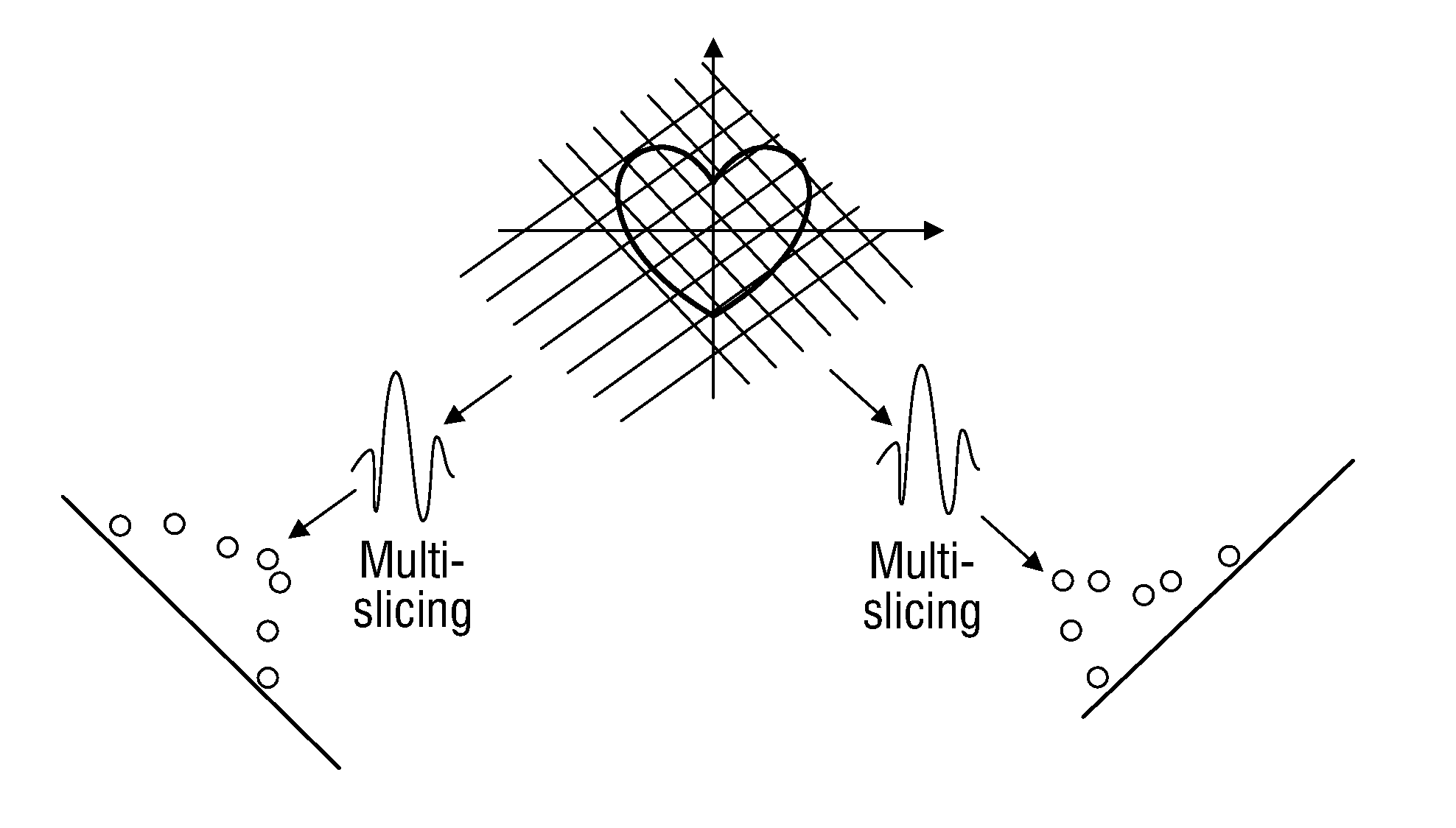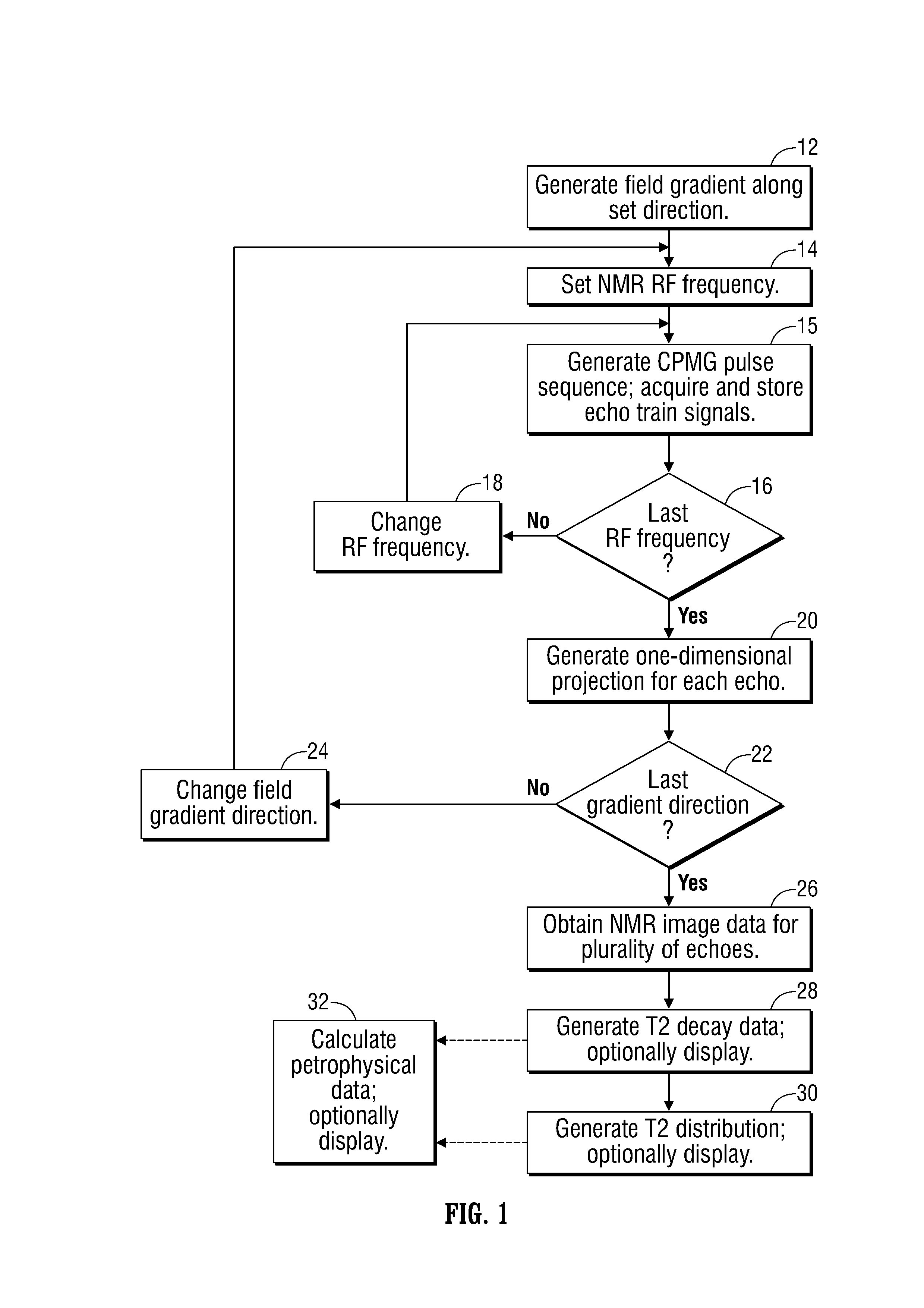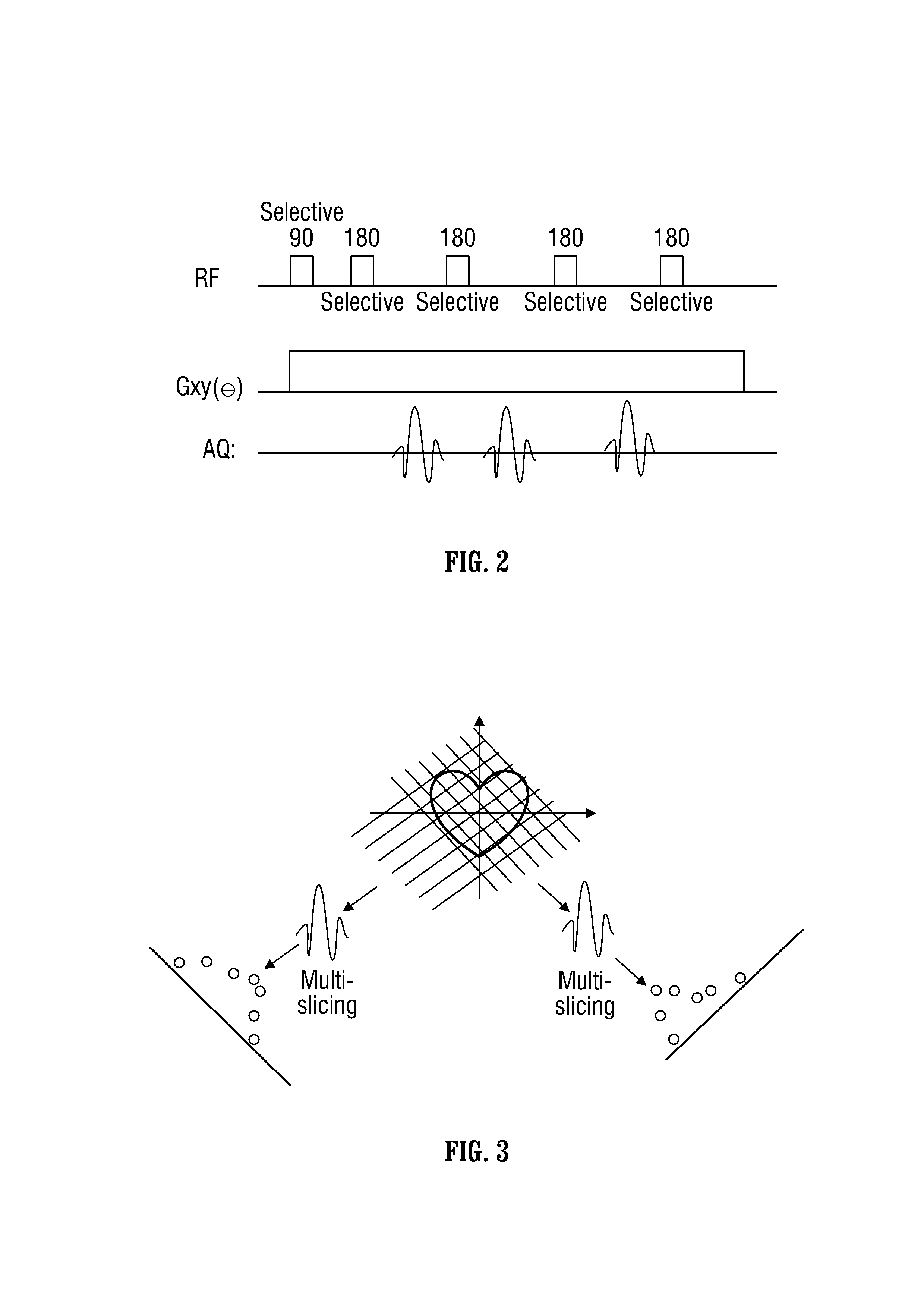Magnetic Resonance Imaging Methods
a magnetic resonance and imaging method technology, applied in the field of nmr imaging methods, can solve the problems of magnetic fields and limit the sample appropriate for analysis
- Summary
- Abstract
- Description
- Claims
- Application Information
AI Technical Summary
Benefits of technology
Problems solved by technology
Method used
Image
Examples
Embodiment Construction
[0037]A flow diagram of one embodiment of an imaging method is seen in FIG. 1. More particularly, an object is investigated using an NMR apparatus (not shown), where a field gradient Gxy( ) is generated by the NMR apparatus at 12 along a set (first) direction. At 14, the RF pulse frequency is set to a set (first) frequency. At 15, a CPMG pulse sequence is generated, and echo train signals are acquired and stored by the NMR apparatus as discussed below with reference to FIG. 2. At 16, a determination is made as to whether echo train signals have been acquired for a desired number of different RF frequencies. If not, the RF frequency is changed to a new set frequency at 18 thereby changing the object slice position as discussed below with reference to FIG. 3, and the method returns to 15 where a CPMG pulse sequence is generated with the new RF frequency and echo train signals are acquired and stored. Steps 15, 16, and 18 are repeated until a determination is made at 16 that signals re...
PUM
 Login to View More
Login to View More Abstract
Description
Claims
Application Information
 Login to View More
Login to View More - R&D
- Intellectual Property
- Life Sciences
- Materials
- Tech Scout
- Unparalleled Data Quality
- Higher Quality Content
- 60% Fewer Hallucinations
Browse by: Latest US Patents, China's latest patents, Technical Efficacy Thesaurus, Application Domain, Technology Topic, Popular Technical Reports.
© 2025 PatSnap. All rights reserved.Legal|Privacy policy|Modern Slavery Act Transparency Statement|Sitemap|About US| Contact US: help@patsnap.com



